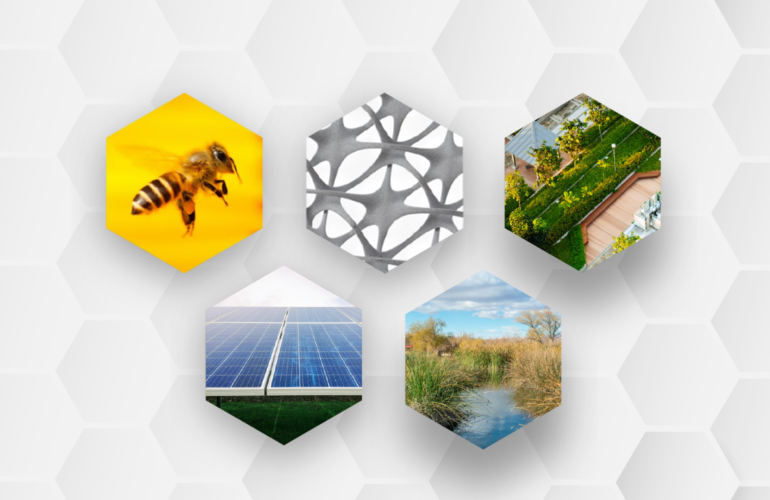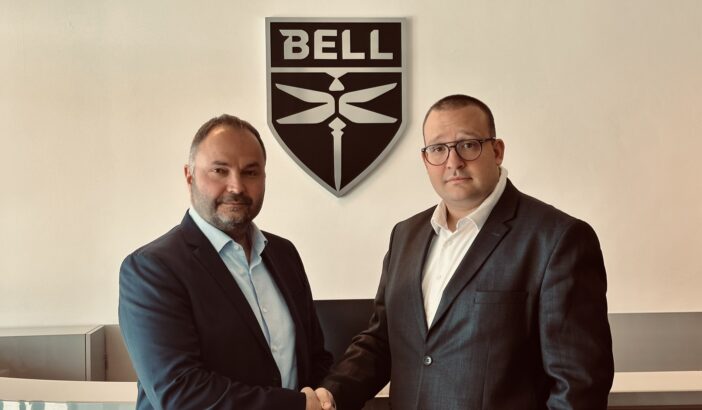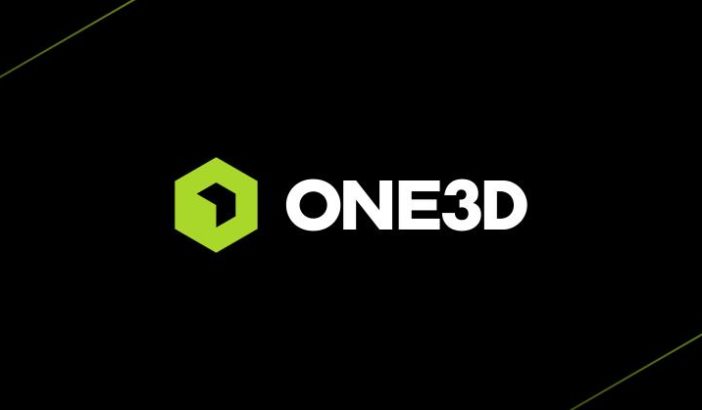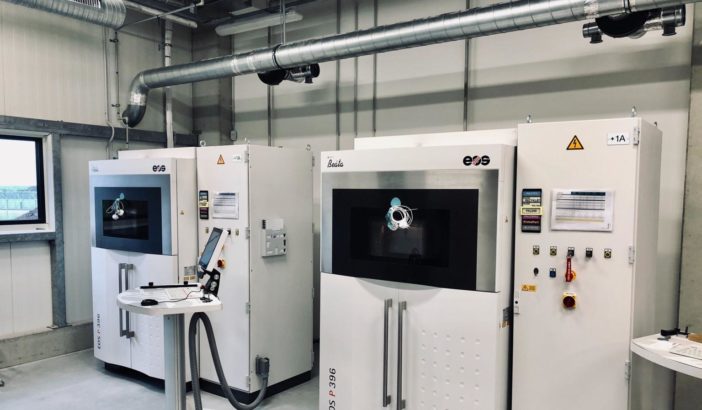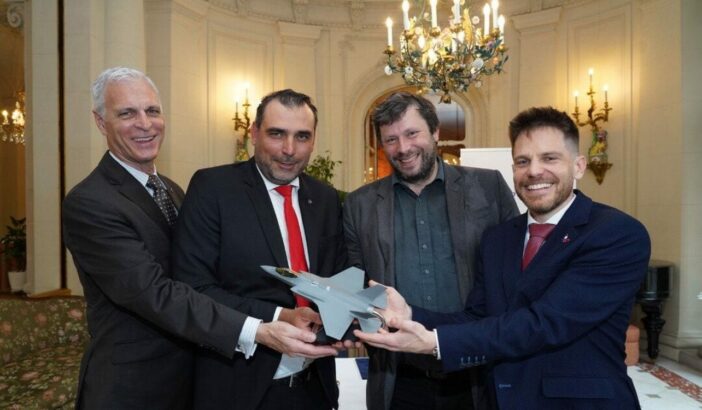Minimum production waste, photovoltaics, biotope, a green roof and beehives.
What is the best approach to stay responsible towards our environment? Get inspired.
Additive waste and its impact
There is no production that does not produce waste. The main goal is to keep reducing the amount of waste and the impact it has. That is why we recycle all that we can. The most prominent in this regard is the plastic and metal powder which we use for most of our additive manufacturing.
All it takes is to add new powder to the used one to create a mixture with 100% quality, ready for further use.
In the table below, you can find information relating the individual technologies. In theory, the SLA and DMLS technologies produce more waste, because they require support structures. The amount of waster depends on the orientation of the given part being produced. But we can and do recycle these supports afterwards.
| Technology | Ratio of new material added | Amount of actual waste |
| SLS | 50% | < 5% |
| SLA | 0%* | 5–20% |
| MJF | 20% | < 5% |
| DMLS | 0% | 5–20% |
*SLA uses liquid resin instead of powder; this can be reused completely, without having to mix.
When it comes to other types of waste, we follow the legislative standards, which are becoming stricter for companies each year. For example, in 2015 we had to recycle only plastics, paper, communal waste and production waste from blasting and coating. In 2022, however, there are almost 30 waste categories. Other than 15 categories listed below in the table, it also includes several metalwork waste types, construction waste, pallets, wood, electric waste or the group of so-called personal waste types.
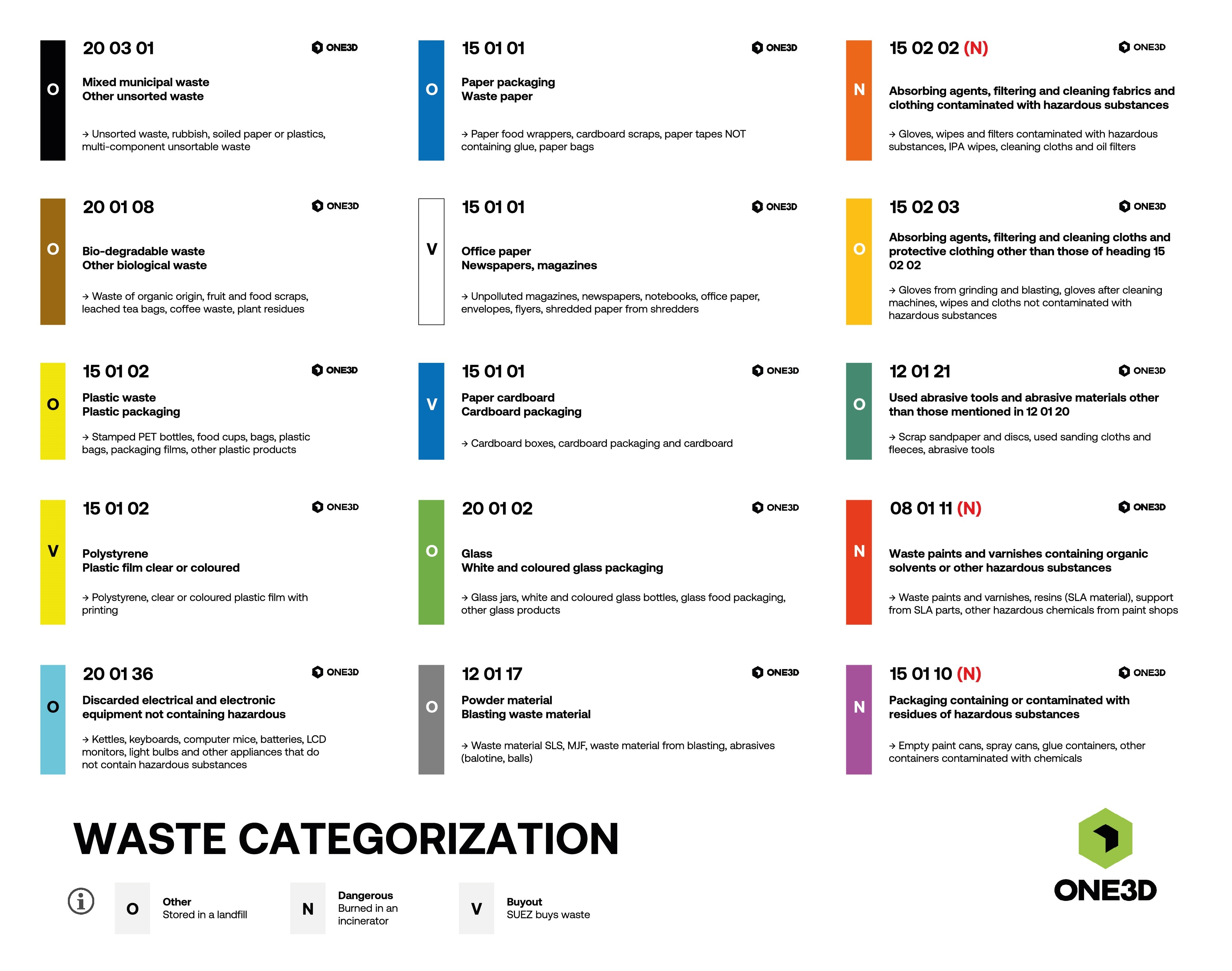
We find this separation between personal and corporate waste a bit too bureaucratic (the same type of plastic in separate bins will meet each other again). Waste is governed by the Waste management act no. 541/2020 Sb. and Decree no. 8/2021 Sb. on the catalog of waste.
We try to see this measure as mostly positive. It is backed (we believe so, at least) by the effort to lessen the negative impact on the planet and our daily lives. And that is worth a bit of struggle.
In total, there are more than 60 bins in our company, which we use to carefully sort our waste.
Our kitchen waste is collected by a biogas station from the nearby town of Rapotín, which uses it to create biogas and certified fertilizers.
Better energy from the core of the Sun, than from the core of an atom
Our actual energy mix looks like this:
- 49% coal
- 39% nuclear
- 8% natural gas
- 4% renewables
Through the lens of current Green Deal rhetoric, when nuclear power and gas are categorized as renewable sources, we can actually say that 50% of our energy is green. Our conscience and wallet tells us to head towards a different goal in the future.
We want to cover 1200 m2, over 50% of our roof, with photovoltaic panels to help us get 100% of our daily energy and even more, to store in batteries and for selling the electricity back.
Besides considering sources of energy, we are also actively examining energy usage. For example, we use waste heat from the compressors to heat water. And for more efficient and economical handling of heat, we are gradually transitioning from heating panels to a VRV system (Variable Refrigerant Volume).
This enables us not only to distribute heat, but also cooling, and it helps us reduce our heat waste, reduce our consumption of input energy, allows for more fluid thermoregulation, automatic management of pressure, monitoring thermal spikes and makes our operation and recuperation more cost-effective. Last but not least, thanks to the removal of heating panels from the ceilings, we have gained space to create skylights and allow more daylight to enter our production hall.
Waiting for rainwater
Even though we spend most of our workday in offices and workshops, we try to also cultivate and use the area around the building. We would mainly like to learn how to go for walks during the workday more frequently, and perhaps soon even go for a swim in the biotope. Our entire team will be building it according to the manuals of David Pagan Butler.
The biotope will be filled with rainwater, which we collect from rooftops with total area of
2000 m2, from where it flows into an underground tank with a volume of 80 m3. The most important permission (in the form of significant silent agreement) has already been given by our Underwater CEO Karel, so we’re ready to roll!
What about the bees?
Can you even imagine what our world would look like without bees? For example, a third of all agricultural production would basically disappear. A few years ago, a Tesco campaign in Slovakia showed just how severe of an impact this would have on our supermarket shelves.
To help at least a bit to solve this global issue, and to provide our internal bee expert Honza Havelka with an active form of relaxation, we plan to very soon place 3 beehives on our grounds.
Bees will be able to find food on our green roof, which will cover
40% of all of our roof area. There will be wildflowers and grasses as well as a drinking fountains for insects. Within this rooftop oasis there will be also a wooden shelter, which will become a shaded lookout and a place to rest for our employees.
At the end of 2021, we managed to secure 3 important ISO certificates regarding protection of quality, employees and nature. And now “just” to continue on our journey.
ONE3D


